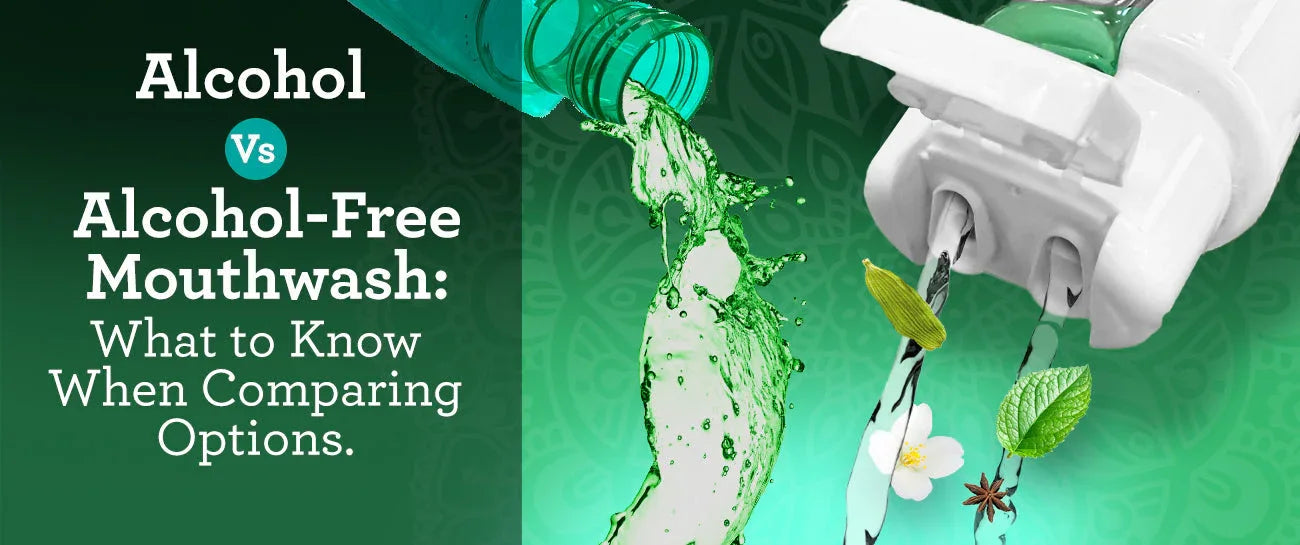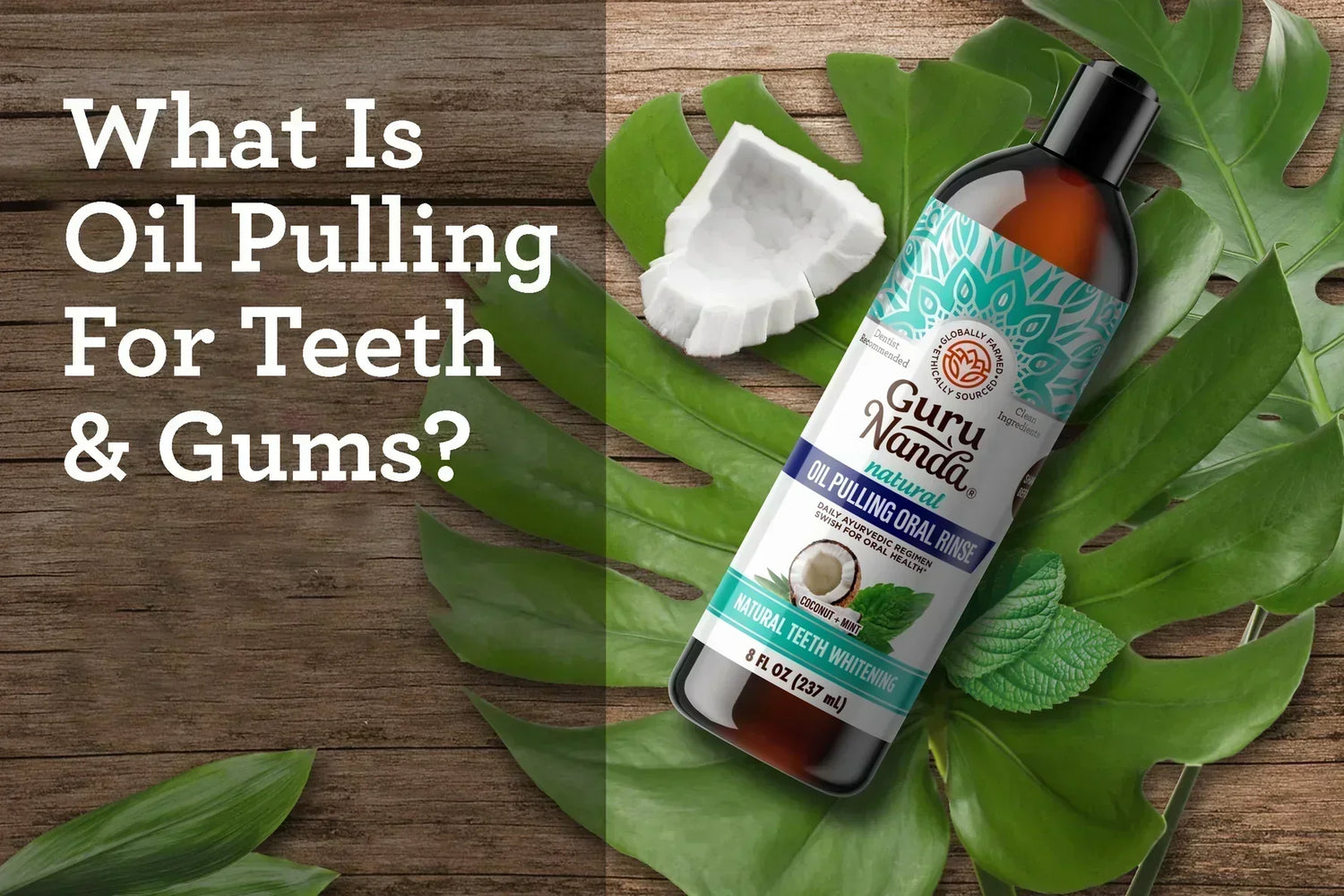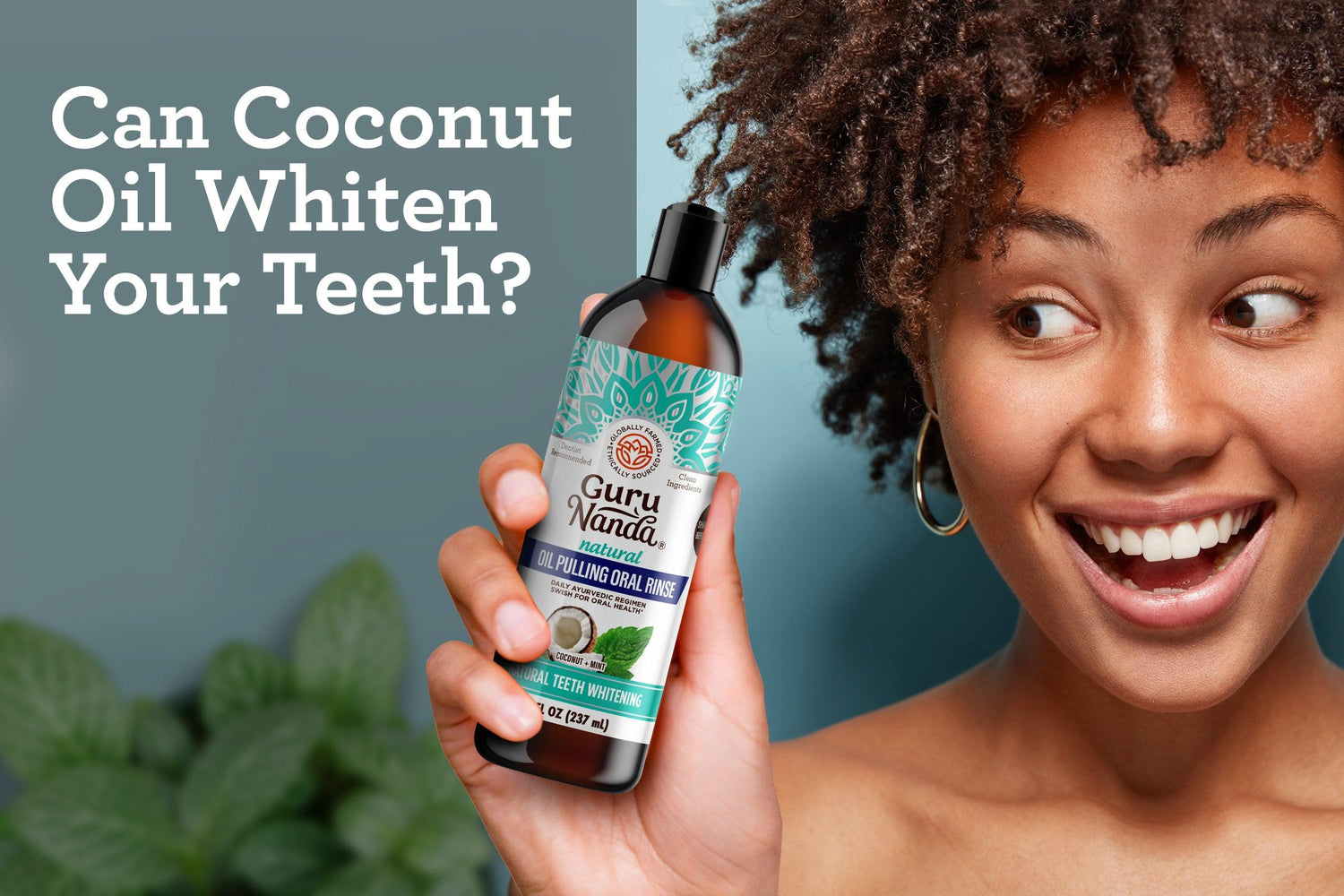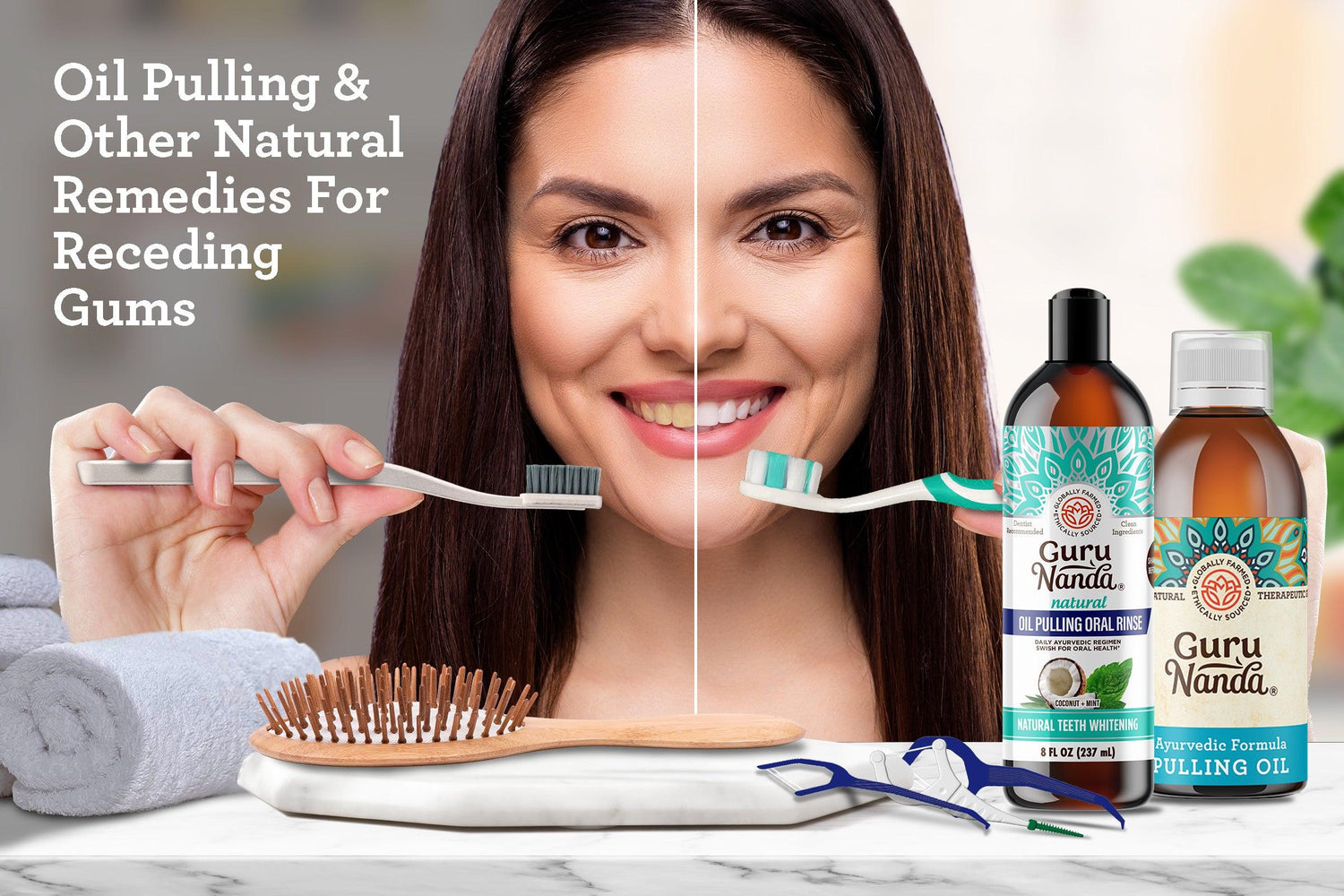El enjuague bucal es una parte importante de una rutina completa de higiene bucal, ya que ayuda a limpiar las zonas que el cepillo de dientes podría pasar por alto, reduce las bacterias y refresca el aliento [1][2] . Algunos enjuagues bucales incluso contienen ingredientes que ayudan a blanquear los dientes de forma natural , ofreciendo un efecto blanqueador suave y gradual, ideal para el uso diario. Si bien sus resultados no son tan espectaculares como los de los tratamientos profesionales, los enjuagues bucales blanqueadores pueden ayudar a mantener una sonrisa más brillante con el tiempo [3] .
Existen dos tipos principales de enjuague bucal: cosmético y terapéutico. Los enjuagues bucales cosméticos disimulan temporalmente el mal aliento y dejan la boca fresca, pero no abordan las causas subyacentes [1] . Los enjuagues bucales terapéuticos van un paso más allá, utilizando ingredientes activos como antisépticos o aceites esenciales para combatir problemas como la gingivitis , la placa y la caries [1] .
Otro ingrediente común en muchos enjuagues bucales es el alcohol. Se usa ampliamente por sus efectos antimicrobianos, pero aún existe debate sobre su utilidad o potencial daño. En esta guía, analizaremos la comparación entre enjuagues bucales con y sin alcohol, qué ingredientes son más importantes y cómo elegir el enjuague adecuado para sus necesidades.
Entendiendo el enjuague bucal con alcohol
Los enjuagues bucales a base de alcohol se han comercializado a menudo por su capacidad para eliminar gérmenes [4] . El etanol, el principal tipo de alcohol utilizado, actúa como disolvente, conservante y antiséptico [5] .
Se ha demostrado que es eficaz para eliminar las bacterias que flotan libremente y puede ayudar a reducir la carga bacteriana general en la boca [6] . Sin embargo, cuando se trata de la placa, una biopelícula pegajosa que se adhiere firmemente a los dientes, el etanol es mucho menos eficaz. Los estudios muestran que solo concentraciones muy altas (alrededor del 40 %), aplicadas varias veces al día durante períodos prolongados, pueden ralentizar significativamente el crecimiento de la placa [6] . Además, un estudio adicional respaldó que el etanol solo elimina las bacterias de forma fiable en concentraciones del 60-85 % [7] , que son superiores a las que contienen la mayoría de los enjuagues bucales. Es poco probable que el uso típico de enjuague bucal produzca los mismos efectos, ya que las concentraciones de etanol suelen oscilar entre el 5 y el 20 % .
Riesgos del uso de enjuague bucal con alcohol
También se sabe que los enjuagues bucales con alcohol causan ardor, sequedad e irritación de los tejidos blandos de la boca [8] . Esto puede agravar la sequedad existente, lo que aumenta el riesgo de caries, infecciones fúngicas como la candidiasis oral, llagas y mal aliento [9].
También existe una preocupación más profunda: el acetaldehído[10]. Este compuesto se forma cuando el etanol se descompone en la boca y se ha relacionado con daños en el ADN y un posible aumento del riesgo de cáncer oral con la exposición crónica[11]. El riesgo aún se debate, y los niveles por uso habitual son generalmente bajos. Sin embargo, la exposición repetida y localizada ha generado alertas en algunos estudios[11].

Entendiendo el enjuague bucal sin alcohol
Los enjuagues bucales sin alcohol contienen muchos de los mismos ingredientes que los que contienen alcohol, incluyendo agentes antimicrobianos, pero sin etanol [12] . Suelen utilizar ingredientes activos como aceites esenciales, compuestos de zinc o antisépticos alternativos. Los aceites esenciales como el mentol y el aceite de clavo son compuestos naturales que pueden dañar las paredes celulares bacterianas y alterar los microbios dañinos [5] . A diferencia del alcohol, no resecan los tejidos ni dejan sensación de ardor, lo que hace que estas fórmulas sean más suaves para la boca.
Los estudios demuestran que tanto los enjuagues bucales con alcohol como los sin alcohol reducen la placa y la gingivitis con su uso regular, pero las opciones sin alcohol tienden a causar menos estrés a las células bucales [8] . Algunas fórmulas sin alcohol también han demostrado eliminar microbios resistentes, lo que las convierte en una opción potente y suave para el uso diario [13] .
Qué ingredientes buscar al elegir un enjuague bucal
✔ Bicarbonato de sodio (bicarbonato de sodio)
Presente de forma natural en la saliva, el bicarbonato de sodio ayuda a neutralizar los ácidos, equilibrar el pH bucal, disolver la placa y reducir la proliferación bacteriana [5] . Es especialmente útil para personas con sequedad bucal, reflujo ácido o exposición frecuente al ácido [5] . Estudios demuestran que puede descomponer las biopelículas de placa madura, lo que lo convierte en un complemento suave pero eficaz para tu rutina de cuidado bucal.
✔ Aceites esenciales
Estos compuestos naturales han demostrado propiedades antibacterianas y antifúngicas [14] . Se ha demostrado que el aceite de clavo, que contiene eugenol, reduce la formación de biopelículas y la actividad metabólica en las bacterias, lo que lo hace eficaz contra los microbios dañinos [15] . También demuestra propiedades antiinflamatorias, lo que favorece unas encías más sanas [5] . El aceite de menta tiene propiedades antibacterianas moderadas y se sabe que aumenta el flujo salival, que es un factor importante para prevenir la sequedad bucal y la halitosis [16] . Mientras tanto, el mentol, otro componente del aceite de menta, proporciona una acción antibacteriana suave junto con una sensación refrescante y calmante [5] . El aceite de árbol de té también es ampliamente reconocido por sus efectos antimicrobianos y desempeña un papel en la reducción de la placa y el apoyo a la salud de las encías [14] . El aceite de orégano es otro ingrediente poderoso, que ayuda a inhibir el crecimiento de las bacterias responsables de las caries al reducir la producción de ácido y evitar que se forme una acumulación pegajosa y dañina en los dientes [17] .
✔ Compuestos de zinc
El zinc ayuda a neutralizar los compuestos de azufre que causan mal olor [18] , los cuales se cree que causan mal aliento [19] . También reduce la actividad de las bacterias que producen estos gases, ofreciendo una frescura duradera y potencialmente menos placa e inflamación [18] .
✘ Clorhexidina
Este antiséptico de prescripción es muy eficaz contra las bacterias y la placa, pero se recomienda reservarlo para uso clínico o a corto plazo. La exposición prolongada puede alterar las bacterias beneficiosas [20] , afectar la regulación de la presión arterial al interferir con la producción de óxido nítrico [21] y causar manchas o alteraciones del gusto [22] . A menos que su dentista lo recomiende para un problema específico, no es ideal para el uso diario.
Consejos para usar enjuague bucal
El enjuague bucal puede ser una excelente adición a tu rutina de cuidado bucal, pero no reemplaza el uso regular de enjuagues bucales con aceite, cepillado y hilo dental. Para obtener resultados óptimos, incorpora el enjuague bucal dos veces al día como parte de tu rutina de salud bucal para ayudar a reducir la placa, combatir las bacterias y refrescar el aliento [1] .
Asegúrese de seguir siempre las instrucciones de la etiqueta, especialmente en el caso de enjuagues bucales con receta o terapéuticos. Usar más de la dosis indicada o intentar compensar la dosis olvidada no mejorará los resultados [1] y podría irritar la boca o alterar el microbioma bucal.
Además, tenga cuidado de no tragar accidentalmente el enjuague bucal. Una pequeña cantidad accidental suele ser inofensiva, pero cantidades mayores, especialmente las que contienen alcohol, flúor o antimicrobianos fuertes, pueden causar náuseas o síntomas más graves [23] . Por eso, no se recomienda el enjuague bucal para niños menores de seis años, ya que podrían ingerirlo accidentalmente [1] . Si un niño ingiere enjuague bucal, enjuáguele la boca con agua y contacte con el Centro de Control de Envenenamiento con el nombre del producto y la cantidad estimada.
También debe evitar el uso de enjuague bucal durante al menos 24 horas después de una extracción dental, a menos que su dentista le dé instrucciones específicas[24]. Durante ese primer día, incluso un enjuague suave puede interferir con el proceso de curación.

Por qué el enjuague bucal sin alcohol de GuruNanda es la mejor opción
Si buscas un enjuague bucal sin alcohol que no comprometa su eficacia, GuruNanda ofrece una opción más inteligente y holística. Mientras que muchas fórmulas simplemente eliminan el etanol, GuruNanda va más allá al combinar ingredientes naturales y potentes con innovadores sistemas de administración diseñados para obtener resultados reales.
Nuestro enjuague bucal Dual Barrel Breath Harmonizer cuenta con un diseño de doble cámara para máxima frescura y cuidado suave. Se activa al verterlo, combinando clorito de sodio, bicarbonato de sodio y siete aceites esenciales, como menta, árbol de té, clavo y orégano. Su fórmula con pH equilibrado no contiene alcohol ni flúor, y proporciona hasta 24 horas de aliento fresco con un uso dos veces al día (cada uso proporciona 12 horas de aliento fresco) sin ardor ni irritación.
Nuestro enjuague bucal blanqueador Oxyburst de doble cuerpo está clínicamente formulado para ayudar a blanquear los dientes hasta tres tonos en tan solo dos semanas. Utiliza un sistema de doble cámara similar para combinar peróxido de hidrógeno con aceites esenciales, eliminando suavemente las manchas superficiales y dejando la boca fresca. El bicarbonato de sodio equilibra la acidez, mientras que el xilitol ayuda a mantener un microbioma limpio y saludable, lo que lo convierte en una forma fácil de iluminar tu sonrisa de forma natural.
Para quienes tienen la boca sensible o prefieren algo más neutro, nuestro enjuague bucal Vita Breath sin sabor ofrece una alternativa limpia sin sabores, edulcorantes, colorantes ni conservantes artificiales. No contiene alcohol ni azúcar, y aun así ofrece una frescura duradera gracias al poder del clorito de sodio.
¿Estás listo para cambiar a un mejor enjuague bucal?
Si bien los enjuagues bucales con alcohol ofrecen beneficios antimicrobianos, presentan desventajas que podrían no ser adecuadas para el uso diario. Los enjuagues bucales sin alcohol, especialmente los elaborados con ingredientes naturales como aceites esenciales, zinc y bicarbonato de sodio, pueden ofrecer resultados efectivos sin ardor, sequedad ni irritación.
Elegir el enjuague bucal adecuado no tiene por qué ser complicado. Con las opciones sin alcohol de GuruNanda, puedes favorecer un aliento fresco, dientes más limpios y un microbioma bucal equilibrado sin irritación.
Mejora tu rutina con los enjuagues bucales sin alcohol ni flúor de GuruNanda hoy.
-
1. Enjuague bucal | Asociación Dental Americana. Disponible en: https://www.ada.org/resources/ada-library/oral-health-topics/mouthrinse-mouthwash (Consultado: 4 de mayo de 2025).
-
2. Enjuague bucal: una visión general | Temas de ScienceDirect. Disponible en: https://www.sciencedirect.com/topics/pharmacology-toxicology-and-pharmaceutical-science/mouthwash (Consultado: 5 de mayo de 2025).
-
3. Karadas M, Hatipoglu O. Eficacia de los enjuagues bucales con peróxido de hidrógeno para el blanqueamiento dental. ScientificWorldJournal. 2015;2015:961403. doi: 10.1155/2015/961403. Publicación electrónica, 30 de julio de 2015. PMID: 26295061; PMCID: PMC4534617. https://pmc.ncbi.nlm.nih.gov/articles/PMC4534617/
-
4. Brookes Z, McGrath C, McCullough M. Enjuagues bucales antimicrobianos: una visión general de los mecanismos: ¿qué nos queda por saber? Int Dent J. 2023;73(Suppl 2):S64–S68. doi:10.1016/j.identj.2023.08.009. https://www.sciencedirect.com/science/article/pii/S0020653923004549.
-
5. Radzki D, Wilhelm-Węglarz M, Pruska K, Kusiak A, Ordyniec-Kwaśnica I. Una nueva perspectiva sobre los enjuagues bucales: ¿Qué contienen y para qué sirven? Int J Environ Res Public Health. 25 de marzo de 2022;19(7):3926. doi: 10.3390/ijerph19073926. PMID: 35409608; PMCID: PMC8997378.
-
6. Sissons CH, Wong L, Cutress TW. Inhibición del crecimiento de biopelículas y placas dentales dispersas por etanol. Arch Oral Biol. Enero de 1996;41(1):27-34. doi: 10.1016/0003-9969(95)00103-4. PMID: 8833587. https://pubmed.ncbi.nlm.nih.gov/8833587/.
-
7. Sauerbrei A. Actividad bactericida y virucida del etanol y la povidona yodada. Microbiologyopen. Septiembre de 2020;9(9):e1097. doi: 10.1002/mbo3.1097. Publicación electrónica, 22 de junio de 2020. PMID: 32567807; PMCID: PMC7520996.
-
8. Gupta V, Pant VA, Pandey S, Pant AB. Evaluación de la eficacia y seguridad de enjuagues bucales con y sin alcohol: Un estudio clinicocitológico. J Indian Soc Periodontol. Marzo-abril de 2021;25(2):128-132. doi: 10.4103/jisp.jisp_196_20. Publicación electrónica: 1 de marzo de 2021. PMID: 33888944; PMCID: PMC8041073. https://pmc.ncbi.nlm.nih.gov/articles/PMC8041073/.
-
9. Xerostomía (boca seca). Asociación Dental Americana. Disponible en: https://www.ada.org/resources/ada-library/oral-health-topics/xerostomia (Consultado: 6 de mayo de 2025).
-
10. Moazzez R, Thompson H, Palmer RM, Wilson RF, Proctor GB, Wade WG. Efecto del enjuague bucal con etanol en la producción de acetaldehído salival. Eur J Oral Sci. Diciembre de 2011;119(6):441-6. doi: 10.1111/j.1600-0722.2011.00886.x. PMID: 22112029. https://pubmed.ncbi.nlm.nih.gov/22112029/.
-
11. Lachenmeier DW, Gumbel-Mako S, Sohnius EM, Keck-Wilhelm A, Kratz E, Mildau G. Aumento de acetaldehído salival debido al uso de enjuague bucal con alcohol: un factor de riesgo de cáncer oral. Int J Cancer. 1 de agosto de 2009;125(3):730-5. doi: 10.1002/ijc.24381. PMID: 19444911. https://pubmed.ncbi.nlm.nih.gov/19444911/.
-
12. Yano Y, Vogtmann E, Shreves AH, Weinstein SJ, Black A, Diaz-Mayoral N, Wan Y, Zhou W, Hua X, Dagnall CL, Hutchinson A, Jones K, Hicks BD, Wyatt K, Brotzman M, Gerlanc N, Huang WY, Albert PS, Wentzensen N, Abnet CC. Evaluación de enjuagues bucales sin alcohol para estudios del microbioma oral. PLoS One. 27 de abril de 2023;18(4):e0284956. doi: 10.1371/journal.pone.0284956. PMID: 37104300; PMCID: PMC10138257. https://pmc.ncbi.nlm.nih.gov/articles/PMC10138257.
-
13. Bahna P, Hanna HA, Dvorak T, Vaporciyan A, Chambers M, Raad I. Efecto antiséptico de un nuevo enjuague bucal sin alcohol: una alternativa profiláctica conveniente para pacientes de alto riesgo. Oral Oncol . Febrero de 2007;43(2):159-64. doi: 10.1016/j.oraloncology.2006.02.002. https://www.sciencedirect.com/science/article/abs/pii/S1368837506000431?via%3Dihub.
-
14. Kairey L, Agnew T, Bowles EJ, Barkla BJ, Wardle J, Lauche R. Eficacia y seguridad del aceite de Melaleuca alternifolia (árbol del té) para la salud humana: una revisión sistemática de ensayos controlados aleatorizados. Front Pharmacol. 24 de marzo de 2023;14:1116077. doi: 10.3389/fphar.2023.1116077. PMID: 37033604; PMCID: PMC10080088. https://pubmed.ncbi.nlm.nih.gov/37033604/.
-
15. Ashrafudoulla M, Mizan MFR, Ha AJ, Park SH, Ha SD. Mecanismo antibacteriano y antibiofilm del eugenol contra la resistencia a antibióticos de Vibrio parahaemolyticus. Food Microbiol. Octubre de 2020;91:103500. doi: 10.1016/j.fm.2020.103500. Publicación electrónica, 11 de abril de 2020. PMID: 32539983. https://pubmed.ncbi.nlm.nih.gov/32539983/.
-
16. Thosar N, Basak S, Bahadure RN, Rajurkar M. Eficacia antimicrobiana de cinco aceites esenciales contra patógenos orales: Un estudio in vitro. Eur J Dent. 2013 Sep;7(Suppl 1):S071-S077. doi: 10.4103/1305-7456.119078. PMID: 24966732; PMCID: PMC4054083.
-
17. Yuan, Y., Sun, J., Song, Y. et al. Actividad antibacteriana de aceites esenciales de orégano contra Streptococcus mutans in vitro y análisis de componentes activos. BMC Complement Med Ther 23, 61 (2023). https://doi.org/10.1186/s12906-023-03890-4 . https://bmccomplementmedtherapies.biomedcentral.com/articles/10.1186/s12906-023-03890-4.
-
18. Suzuki N, Nakano Y, Watanabe T, Yoneda M, Hirofuji T, Hanioka T. Dos mecanismos de inhibición del mal olor oral mediante iones de zinc. J Appl Oral Sci. 18 de enero de 2018;26:e20170161. doi: 10.1590/1678-7757-2017-0161. PMID: 29364345; PMCID: PMC5777415.
-
19. Nakano Y, Yoshimura M, Koga T. Correlación entre el mal olor bucal y las bacterias periodontales. Microbes Infect. Junio de 2002;4(6):679-83. doi: 10.1016/S1286-4579(02)01586-1.
-
20. Ribeiro AA, Azcarate-Peril MA, Cadenas MB, Butz N, Paster BJ, Chen T, et al. El microbioma bacteriano oral de las superficies oclusales en niños y su asociación con la dieta, la higiene bucal y la caries. Front Cell Infect Microbiol. 28 de febrero de 2019;9:39. doi: 10.3389/fcimb.2019.00039. https://www.frontiersin.org/journals/cellular-and-infection-microbiology/articles/10.3389/fcimb.2019.00039/full .
-
21. Bagabir HA, Bagabir R, Johargy AK, Faidah H, Babalghith AO, Bantun F, Ahmad F, Mathkor DM, Haque S. Un metaanálisis de estudios de cohorte y piloto indica una asociación entre el uso de enjuague bucal y el riesgo de hipertensión en adultos. J King Saud Univ Sci. 2024;36(5):103183. doi: 10.1016/j.jksus.2024.103183. https://www.sciencedirect.com/science/article/pii/S1018364724000958 .
-
22. Karpiński TM, Szkaradkiewicz AK. Clorhexidina: actividad farmacobiológica y aplicación. Eur Rev Med Pharmacol Sci. 2015;19(7):1321-1326. https://www.europeanreview.org/article/8142 .
-
23. Enjuague bucal: Enjuáguese la boca y escupa. Centro de Control de Envenenamiento. Disponible en: https://www.poison.org/articles/mouthwash (Consultado: 6 de mayo de 2025).
-
24. Extracción de muelas del juicio (2024) Mayo Clinic. Disponible en: https://www.mayoclinic.org/tests-procedures/wisdom-tooth-extraction/about/pac-20395268 (Consultado: 5 de mayo de 2025).





